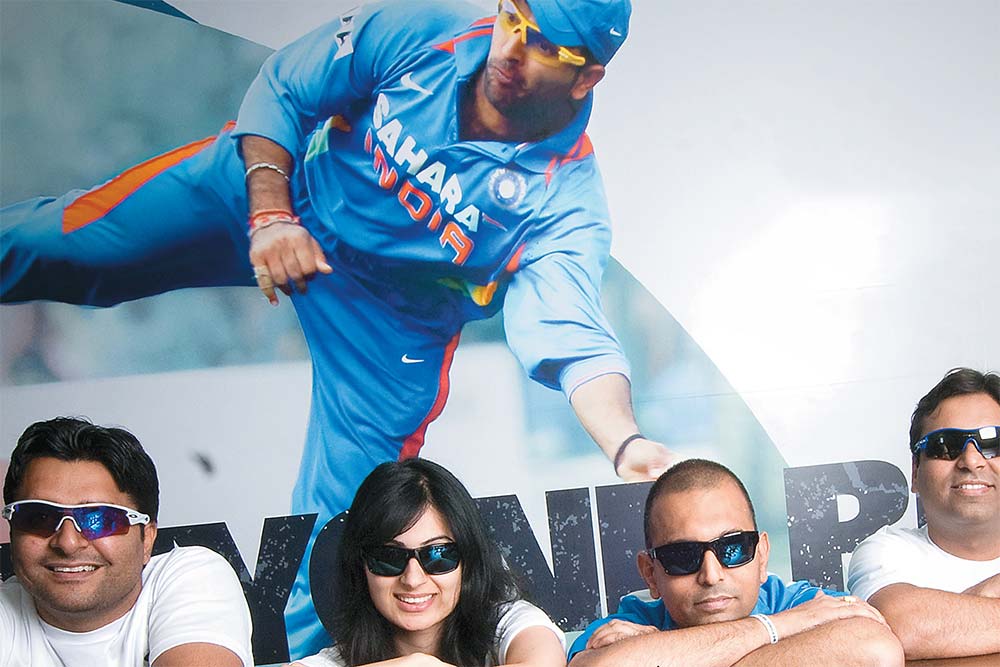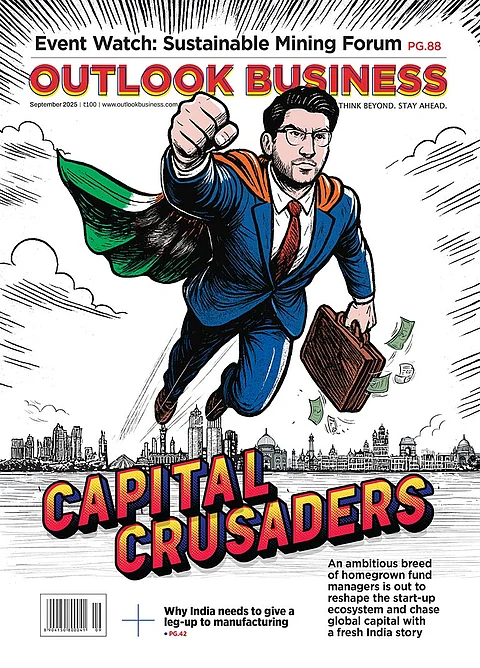Are you watching the match?” That’s a no-brainer, thought the owner of Welldone Opticals in Chandigarh. It was the World Cup final — what else would he be doing? But the caller, a young man who was a frequent customer at the eyeglasses store in Chandigarh, didn’t wait for a reply. “Watch out the next time they show Ranbir Kapoor in the stands,” he said. “I want the same pair of Oakleys.”
Customer orders like that one aren’t the norm but demands for the same style of Oakleys worn by different celebrities and sportstars are all too common. The iconic American sports eyewear brand made its way to India only in 2009 but it already had a steady fan following here long before that, thanks to various film, sport and celebrity associations. The brand has been seen in hit movies such as Spider-Man, Mission Impossible II and X-Men, is worn by rappers such as T-Pain, Pit Boss and Lil Jon, and shields actors such as Nicole Richie, Adam Sandler and Matt Damon from prying paparazzi. It’s also an avowed favourite with sportsmen such as Lance Armstrong and Michael Jordan apart from cricketer Yuvraj Singh. All of which makes Oakleys a must-buy for the most trend-conscious youngsters. Besides, there’s a certain appeal in telling your mates you’re wearing a Monster Dog, Frog Skins, Water Jacket or Eyepatch.
For sportsmen, though, the brand’s attraction lies in its de sign and technology. Oakley is at the top of the heap when it comes to performance opticals: it makes high definition, water repelling lenses that ensure the user’s vision remains clear at all times. Not surprisingly, that makes the brand a hit on the sports field, an advantage Oakley has built on right from the start and continued in India as well. “Sport is the anchor for Oakley,” agrees Amitabh Sehdev, national business head for Oakley in India.
So, rather than a conventional advertising campaign, Luxottica (the Italian eyewear giant acquired Oakley in 2007) seeded the market by offering its products to top sportsmen in the country, hoping the tacit endorsement would aid brand recognition: at the 2009 IPL, for instance, it handed out Oakley products to players of all eight participating teams (since 2011, Oakley has formalised its association with IPL by becoming its official eyewear partner). It has also opted for on-ground activities that let potential customers get a first-hand feel of the product: in May 2011, the brand launched the Go Beyond Boundaries initiative that included a 10,000 km bus tour covering 45 cities across India that educated customers about the product’s features and how it scored over rival brands.
Cool stats
Anil Kumar of Bengaluru recalls driving on the Mumbai-Goa highway last year during the monsoon. The rain was coming down in sheets and Kumar’s friend, who was sitting beside him, wondered at the ease with which he was driving. Kumar says he realised how bad the visibility was only when he took his shades off — night vision Oakleys. “The lenses are superb,” says the 29-year-old real estate business executive. He bought his first pair three years ago and now has a collection of seven Oakleys. “I buy them for the quality of the lenses and the distinctive styling,” he adds.
It’s people like Kumar who are driving Oakley’s sales in the country, already the second-largest selling brand in Luxottica’s India portfolio, next to top seller Ray-Ban. “Our sales have doubled every year,” says Akash Goyle, MD, Luxottica India Eyewear, which has 30 lifestyle, fashion and luxury eyewear brands in its portfolio. Even though the starting price point of a Ray-Ban and an Oakley are similar — around ₹4,500 — there is no cannibalisation between them because Ray-Ban is positioned for the lifestyle segment while Oakley is completely sports-oriented. “The brands serve different needs,” says Sehdev.
Although Oakley’s 300-product portfolio in India has prices ranging from ₹4,500 all the way up to ₹34,000, the bulk of sales happens in the ₹4,500-7,000 range. Most of Oakley's customers belong to the 18-30 year age bracket. Sehdev says the thrust has been to keep the brand premium but accessible. The strategy seems to be working: unlike most premium brands that struggle to gain acceptance outside the metros, about half of Oakley’s sales come from Tier-2 cities and smaller towns. That share will go up as the company ramps up distribution; from 600 outlets in 2011, Oakley will now be available in over 1,000 outlets by this year-end with a majority being in non-metros. Oakley is also extending its product range beyond sunglasses to apparel, watches and footwear.
Surprisingly, conventional advertising is still not high on Oakley’s gameplan for India. Luxottica’s annual advertising and marketing spend for Oakley is relatively on the higher side, at 10-13% of its sales, unlike 5-7% for most brands in this category. Half of this spend is directed at ground activities to give customers an experience and feel of the product. The other half goes into digital marketing and print advertising — restricted largely to sports magazines such as Sports Illustrated and Golf Club. The future plan is to step up digital spend by at leaast 50% over the next year as it caters to youth segments in both metro and non-metro markets.
Oakley is also reaching out to its young customers through social media networks. The Oakley India Facebook page has 16,000-odd members and Sehdev says the plan is to now have a dedicated social media team to take this number to over 100,000 in the next year. New product launches, too, will be announced through these networks. “Peer influence works best with youth brands,” says Sehdev.
Last month, Oakley introduced its latest offering Radarlock, which allows users to change lenses depending on light conditions. They had a campaign that included a Facebook announcement wherein ‘early birds’ could book their eyeglasses in advance. As it turned out, there was an overwhelming response, with many users paying the entire ₹11,500 in advance and waiting 45 days for their delivery. For a three-year-old brand that does almost zero advertising, that’s not bad at all.












 Just one email a week
Just one email a week